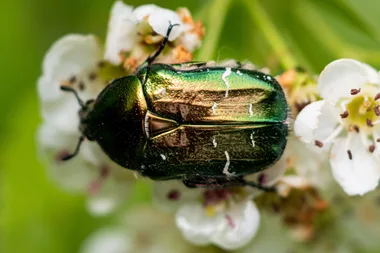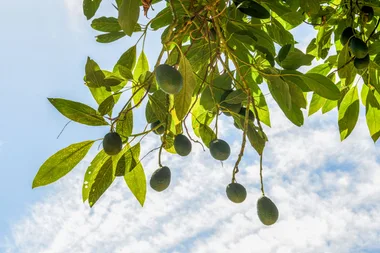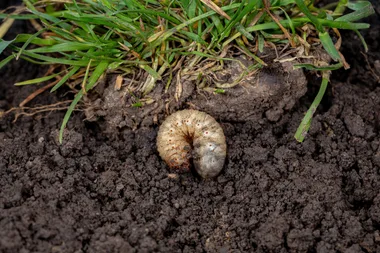Asparagus (Asparagus officinalis) may not be at the top of your list when planning and planting your vegie garden, but as soon as those delicious spears make an appearance at your local greengrocer, your green thumb will start to twitch.
WATCH: Smokey Asparagus And Egg Salad With Roasted Leg Lamb
How to grow and care for asparagus
Aspect
A position in the full sun.
Climate
Asparagus is a perennial with ferny foliage that grows in various climates. It thrives best in temperate to cool climates. Frost is not a problem because the plant dies off each winter to produce new growth (shoots and spears) each spring.
Soil
Originally from the Mediterranean, asparagus prefers a free-draining light soil, where its extensive root system can easily spread 1.5-2m. Because of their longevity and intolerance to transplantation, take the time to improve the soil before planting. Add lots of compost, manure, and lime to increase soil pH and make the soil more friable. In clay soils, add a little gypsum, too. Dig over the soil well to make it even easier for the developing roots to establish readily.
Water
Water regularly, especially in summer.
Fertiliser
Fertilise with blood and bone or dynamic lifter in spring, but opt for composted manure in winter.
How do you plant asparagus for the first time?
Step 1
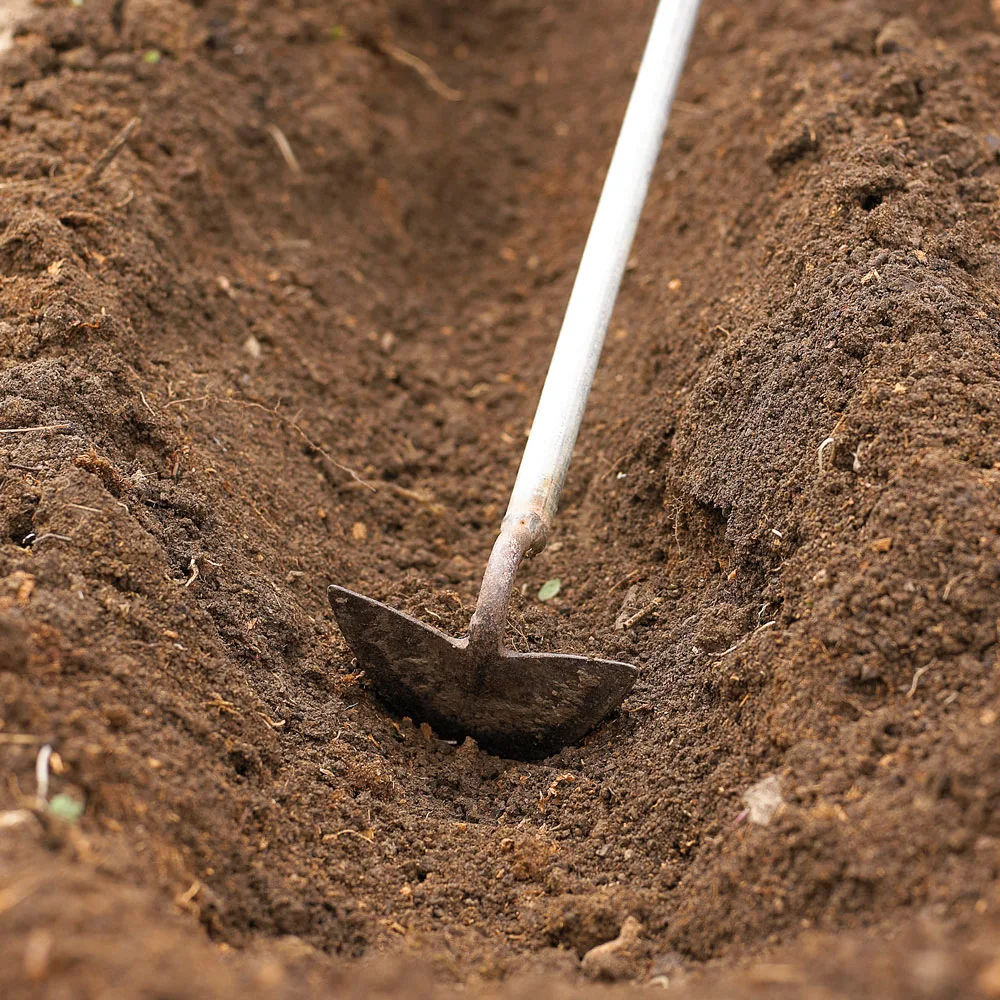
Dig a trench about 20cm deep and 20–30cm wide.
Step 2
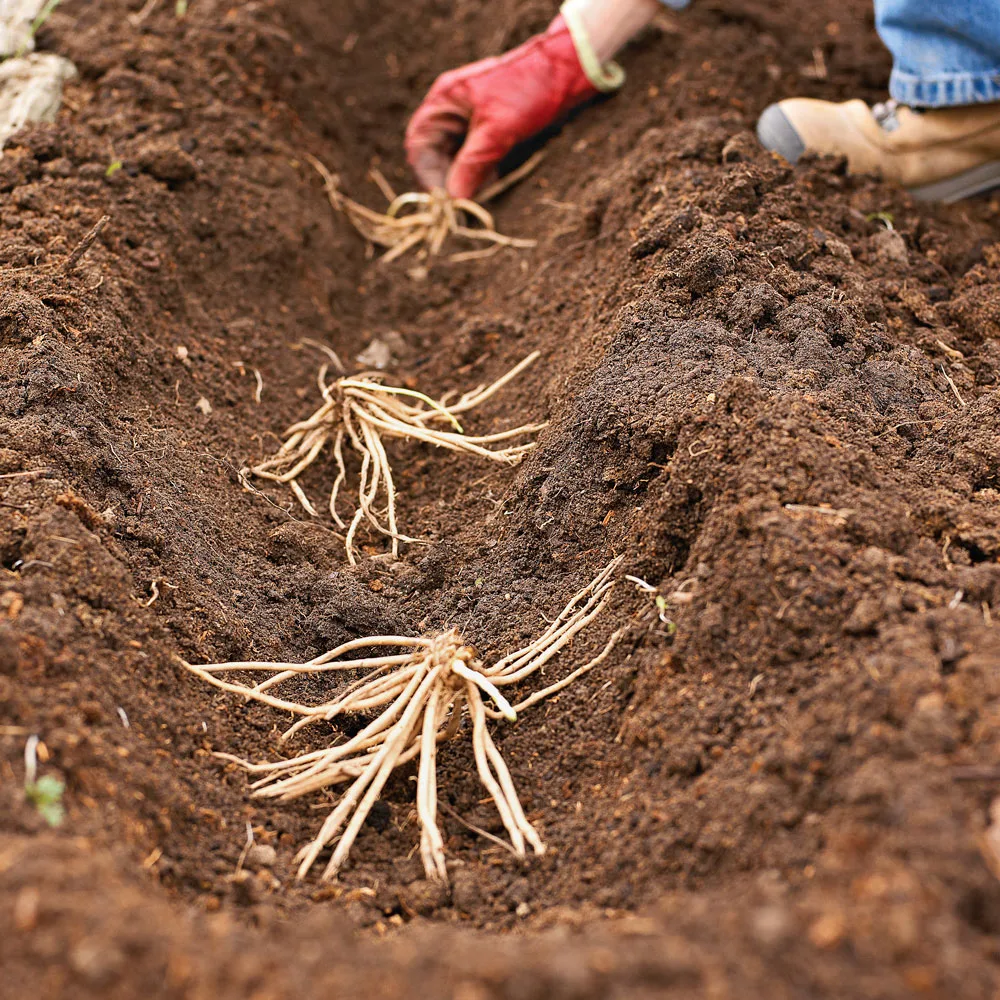
Set the asparagus crowns about 30–50cm apart, placing each on a small mound of soil to support roots.
Step 3
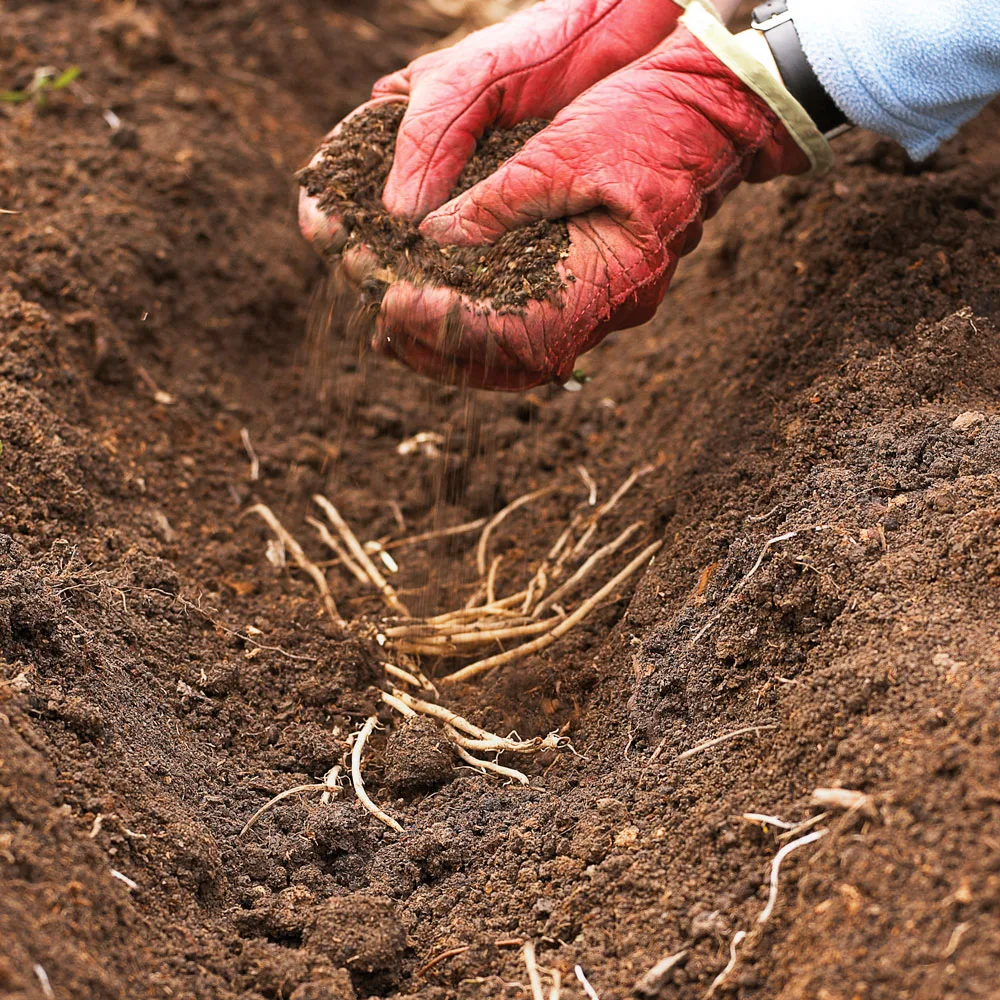
Cover crowns with about 5cm soil. Firm soil around crowns and water them well. As the fern grows, keep adding more soil until bed is level with surrounding garden.
Step 4
Water regularly and feed periodically through summer with a high-nitrogen fertiliser to encourage plenty of ferny top growth. In winter, cut down dry yellow fern to just above ground level. Fertilise again in late winter to encourage spear growth in spring. Don’t cut any spears in the first spring after planting. Harvests can increase each following year as plants grow older.

How long does it take for asparagus to grow?
The time it takes for asparagus to grow depends on various factors, such as climate, soil conditions, and the age of the asparagus plant. However, once established, asparagus plants typically take about 2 to 3 years to reach full production.
During the first year after planting crowns (the root system of asparagus), it’s essential to allow the plants to establish themselves without harvesting any spears. This allows the plants to develop a robust root system and establish healthy fern growth, supporting future spear production.
In the second year, you may be able to harvest a few spears, but it’s still recommended to limit harvesting to allow the plants to continue strengthening. By the third year, the asparagus plants should be fully established and capable of producing a full harvest throughout the growing season.
Once established, asparagus can continue to be produced for many years, with some varieties producing for 15 years or more.
What types of asparagus are there in Australia?
- The most common variety of green asparagus grown in Australia is ‘Mary Washington’, which is available as crowns via mail order. It grows well in subtropical regions, temperate zones and cool climates.
- Purple asparagus has become popular recently, with ‘Sweet Purple’ a deliciously sweet cultivar with a subtle nutty flavour. The spears are tender and are a great introduction for children to this delicious vegetable.
- White asparagus is simply green asparagus grown in total darkness. In the absence of light, the spears don’t develop chlorophyll, remaining white and tender. White asparagus is delicate and should be handled with care.
- Visit your local nursery or jump online to order your asparagus crowns now.
Can asparagus be grown in pots?
Easy to grow, asparagus crowns produce around 20 spears per year (once mature), remaining in situ for 15 years or more. With long root systems, they can’t be grown in pots and don’t transplant well, requiring a permanent spot in the garden. The good news is, once established, they will reliably produce delicious spears every spring with little or no maintenance.
What are the benefits of eating asparagus?
- Asparagus is low in kilojoules and without fat or cholesterol. It also provides fibre and inulin (a very important prebiotic).
- Asparagus provides the essential B-group vitamins thiamin, riboflavin, niacin, B6 and biotin.
- Asparagus is a great source of folate, with a serving providing over 20% of your daily needs. Folate is important for expectant mothers and for reducing heart disease risk.
- A serving of asparagus provides about a quarter of our daily vitamin C needs.
- Asparagus has a brilliant range of bioactive compounds, such as antioxidants like rutin and beta-carotene. Research strongly suggests that these compounds keep us healthy well into old age.
- Asparagus has potassium and the compound nicotinamide to help keep your blood pressure healthy.
Should fresh asparagus be refrigerated?
Want to make your asparagus go the distance? Once picked, keep them fresher for longer by storing them like freshly cut flowers. Stand the spears upright in a container with about 5cm of cold water, cover them, and place them in the fridge loosely covered with plastic. They can be kept up to a week.
How do you harvest asparagus in Australia?
season, cutting them off just below the soil surface. Avoid harvesting the first season, as this puts the young crown under too much stress. After the first spring, production will steadily increase, eventually providing a healthy harvest. Growers recommend ten plants per person, so oversow asparagus with leafy greens and other shallow-rooted annuals to maximise garden production while still maintaining an adequate yield.
You might also like
How to make your own plant fertiliser
3 projects for your vegie garden
